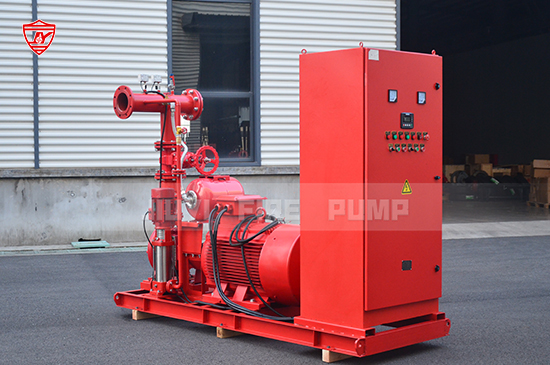Fire pumps are critical components of any fire protection system. To ensure they function reliably during emergencies, a thorough annual inspection is not just recommended—it’s required by standards such as NFPA 25. As a fire pump manufacturer, we understand how important it is for building owners, facility managers, and fire safety professionals to keep their systems in optimal condition. Here’s a step-by-step guide to conducting an annual fire pump inspection.

Start with a review of all maintenance records, weekly/monthly inspections, and any repairs made over the past year. This helps identify recurring issues or performance trends.
Inspect the fire pump and all related components for signs of damage, corrosion, leaks, or wear. Focus on:
Pump casing and piping
Couplings and alignment
Control panel condition
Pressure relief valves
Conduct a flow test in accordance with NFPA 25 standards, typically using a hose header or flow meter. This verifies:
Pump start-up response
Flow rates at various pressures (churn, rated, peak)
Overall system performance under load
Depending on your fire pump type, include:
Electric Fire Pump: Check motor condition, amperage draw, and voltage.
Diesel Fire Pump: Inspect batteries, fuel system, engine oil, coolant levels, and exhaust.
Verify that the gauges are working and showing accurate readings. Compare test results to the pump’s nameplate and previous annual tests.
Test the controller’s ability to start and stop the pump automatically and manually. Confirm all alarms and signal transmissions are functional.
Ensure that the water supply—whether from a tank, municipal source, or suction tank—is free of obstructions and at proper capacity.
If you detect any worn or aging components such as seals, bearings, or belts, replace them promptly to prevent failure during an emergency.
Keep a comprehensive record of all tests, measurements, observations, and any corrective actions. This is crucial for compliance and tracking performance over time.
Set reminders for lubrication, fuel treatment, battery testing, and other preventive maintenance tasks throughout the year.
Conclusion
Annual fire pump inspections are essential for ensuring compliance and safeguarding lives and property. By following a structured approach aligned with NFPA 25, building managers and fire safety professionals can maintain peak performance of their fire protection systems.